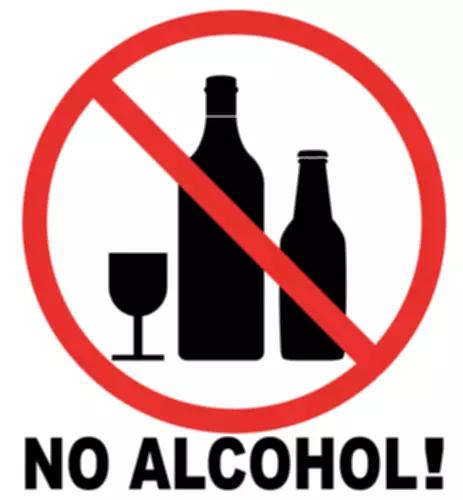Another study by[55] aimed to look at the availability of the SERT in patients with AD. SERT availability was measured in vivo with single photon emission computed tomography and (123) I-labeled 2-((2-((dimethyl-amino) methyl) phenyl) thio)-5-iodophenylamine in the midbrain, thalamus and striatum. The study found that when compared with healthy controls, patients with pure AD had a significantly lower availability of SERT in the midbrain.
Amygdala Neurosciences Awarded $2.0 million NIH Grant to Conduct IND Enabling Studies
Gene expression of cholinergic interneuron markers and several nAChR subunits was not changed following chronic alcohol consumption and abstinence (D, E). SSRI’s also are useful in treating anxiety, depression, and other mood disorders that result at least in part from dysfunctional serotonergic signal transmission in the brain (Baldessarini 1996). Accordingly, drugs that target serotonergic signal transmission may reduce alcohol consumption partly by improving the co-occurring psychiatric problems and thus eliminating the need for self-medication with alcohol. To some extent, however, the effects of SSRI’s on alcohol consumption appear to be unrelated to the medications’ antidepressant or anxiolytic effects (Naranjo and Kadlec 1991). The effects of SSRI’s and other serotonergic medications on alcohol abuse will be difficult to disentangle from their effects on co-occurring mental disorders. Nevertheless, the information currently available clearly indicates that serotonergic signal transmission plays an important role in alcohol abuse and therefore may yet be a target for therapies to reduce alcohol consumption.
View All Health
1Throughout this article, the term “alcohol abuse” is used to describe any type of alcohol consumption that causes social, psychological, or physical problems for the drinker. Thus, the term encompasses the clinical diagnoses of alcohol abuse and alcohol dependence as defined by the American Psychiatric Association. Serotonin is not the only neurotransmitter whose actions are affected by alcohol, however, and many of alcohol’s effects on the brain probably arise from changes in the interactions between serotonin and other important neurotransmitters. Thus, one approach researchers currently are pursuing to develop better therapeutic strategies for reducing alcohol consumption focuses on altering key components of the brain’s serotonin system. All psychoactive drugs can activate the mesolimbic DA system, but the DA system is not the only system involved in the positive reinforcement network in the NAc. Previous research about the neurobiochemisty of alcohol dependence has focused on the DA system, but many of the findings have been contradictory.

function lazyLoadRecaptcha()
These findings could explain why men are more than twice as likely as women to develop an alcohol use disorder. Activities such as eating, hugging and exercising can generate dopamine production in the brain. The brain uses billions of neurotransmitters to manage everything from our breathing to our heartbeat to our digestion. Some alcoholic beverages, such as liquors and wine, have higher amounts of alcohol than drinks such as beer and may have a stronger diuretic effect. If a person does not drink enough water with alcohol, they can become dehydrated very quickly.
Dopamine and AUD

The patient reported increased nighttime consumption of alcohol including vodka, wine, and beer of over 20 drinks per week for the past 2 years. Her laboratory profile showed an elevated fasting glucose level (106 mg/dL, formerly 98 mg/dL), an elevated gamma-glutamyltransferase (GGT) level, and iron deficiency anemia. Into Action is an addiction treatment center specializing in personalized treatment for drug and alcohol abuse, conveniently located in Houston, Texas and led by experienced master’s level counselors and medical professionals. For the McGill study, researchers recruited 26 healthy social drinkers (18 men, 8 women), 18 to 30 years of age. The higher-risk subjects were then identified based on personality traits and having a higher tolerance to alcohol (they did not feel as drunk despite having drunk the same amount). Finally, each participant underwent two positron emission tomography (PET) brain scan exams after drinking either juice or alcohol (about 3 drinks in 15 minutes).
Researchers uncover new target of alcohol in the brain – UIC Today
Researchers uncover new target of alcohol in the brain.
Posted: Mon, 22 Oct 2018 07:00:00 GMT [source]
Neurotransmitters in alcoholism: A review of neurobiological and genetic studies
This review summarizes some of the characteristics of dopaminergic signal transmission as well as dopamine’s potential role in alcohol reinforcement. Current research strongly suggests that alcohol affects multiple neurotransmitter systems in the brain. Virtually all brain functions depend on a delicate balance between excitatory and inhibitory neurotransmission. Research findings indicate that the consequences of short- and long-term brain exposure to alcohol result from alterations in this balance.

- When alcohol consumption is abruptly discontinued or reduced, these compensatory changes are no longer opposed by the presence of alcohol, thereby leading to the excitation of neurotransmitter systems and the development of alcohol withdrawal syndrome.
- Decreased binding of Cbp and lysine demethylase Kdm6b was also shown at specific target genes upon adolescent intermittent alcohol exposure, resulting in anxiety-like behaviors in adult rats [22].
- 3Glutamate is the major excitatory neurotransmitter; that is, glutamate stimulates the signal-receiving cell.
- Specifically, a subset of infralimbic cortical neurons serve to protect against relapse to alcohol use [100].
For example, in studies performed in rats, alcohol injected into the blood in amounts as low as 2 to 4 milligrams per kilogram of body weight increased dopamine release in the NAc shell and maintained chronic alcohol self-administration (Lyness and Smith 1992). In rats, oral alcohol uptake also stimulates dopamine release in the NAc (Weiss et al. 1995). To achieve the same effect, however, this administration route requires higher alcohol doses than does alcohol injection directly into the blood.
- ANS-858 is a new selective, reversible, orally bioavailable ALDH2 Inhibitor in pre-clinical development to reduce craving.
- Results of the study were published online Monday by the journal Neuropsychopharmacology.
- 4N-methyl-d-aspartate, or NMDA, is a chemical that specifically activates this glutamate-receptor subtype.
- Nonetheless, our observed adaptations in dopamine uptake may contribute to the apparent changes in dopamine release following long-term alcohol consumption.
One mutation is known as the “long” allele and the other mutation is known as the “short” allele. The difference between the two alleles is that the “short” version of the allele has a 44 bp deletion in the 5’ regulatory region of the gene. This 44 bp deletion occurs 1 kb upstream alcohol and dopamine from the transcription initiation site of the gene.[53] This is depicted through the following diagram [Figure 4]. Finally, realize the power of dopamine and know that sometimes your lack of energy and motivation is determined more by your hidden physiological makeup.
For example, alcohol modulates the serotonin levels in the synapses and modifies the activities of specific serotonin receptor proteins. Moreover, SSRI’s and receptor antagonists can reduce alcohol consumption in humans and animals, although these agents are only moderately effective in treating alcohol abuse. The second line of evidence implicating serotonin in the development of alcohol abuse stems from studies of compounds that interfere with the functions of the transporters that remove serotonin https://ecosoberhouse.com/ from the synapse. One of these agents, fluoxetine (Prozac®), is used widely for treating mood disorders, such as depression (Baldessarini 1996). Experimental animals treated with this and related compounds exhibited reduced alcohol consumption (LeMarquand et al. 1994b; Pettinati 1996). Similarly, alcoholics taking fluoxetine drank less frequently and reduced their alcohol consumption during drinking sessions (LeMarquand et al. 1994a; Litten et al. 1996; Naranjo and Bremner 1994; Pettinati 1996).
- Serotonin also modulates the behavioral response to unfairness.[48] Most of the drugs used to treat depression today work by increasing serotonin levels in the brain.[49] The image below, shows, the regions of the brain where serotonin reaches [Figure 3].
- Another example of a recent discovery facilitated by novel approaches is that aldehyde dehydrogenase 2 (ALDH2) in cerebellar astrocytes promotes alcohol metabolism, GABA production and ethanol-induced intoxication in mice [11].
- Activation of the adenosine system causes sedation, whereas inhibition of this system causes stimulation.